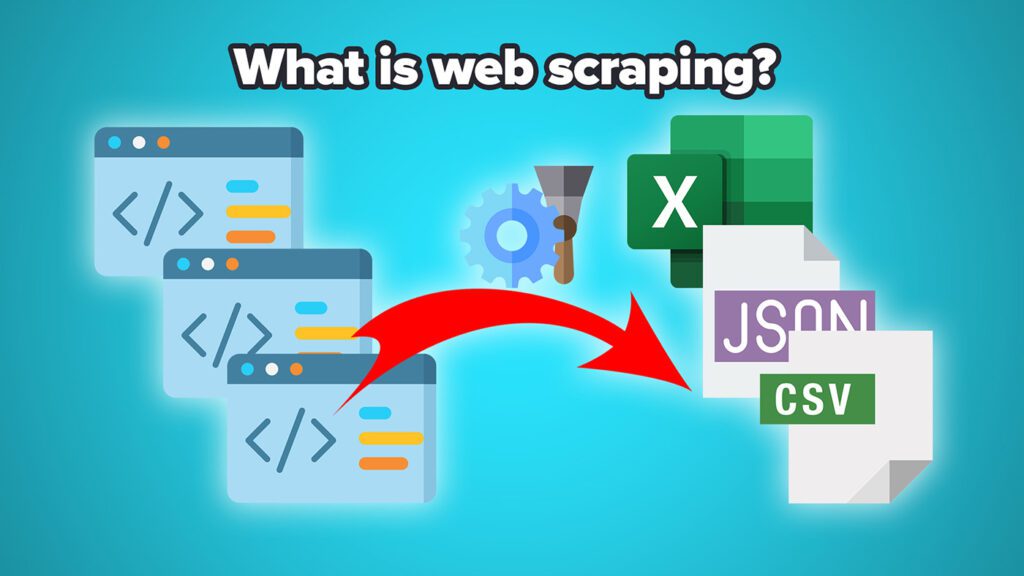Introduction
In today’s digital economy, data is a crucial resource for driving business decisions. As one of the world’s largest e-commerce platforms, Amazon’s site data holds immense commercial value. From market research to inventory management, Amazon data plays a pivotal role in various business activities. This article will detail how to use the Amazon API for data scraping, explore various tools on the market and their working principles, advantages, and limitations, and provide code examples to help readers better understand and apply these techniques.
I. Purposes and Scenarios of Amazon Data Scraping
Market Research and Competitor Analysis
By scraping product information, prices, and reviews from Amazon, businesses can conduct market research to understand competitors’ product strategies and market dynamics. This helps businesses optimize their product lines and pricing strategies.
Product Pricing and Inventory Management
Scraping Amazon data can help businesses monitor market price changes in real-time and adjust their pricing strategies accordingly. Additionally, analyzing inventory data allows businesses to optimize inventory management, avoiding stockouts or overstocking.
User Behavior Analysis and Personalized Recommendation Systems
By scraping user reviews and purchase records, businesses can analyze user behavior and develop personalized recommendation systems, increasing customer satisfaction and sales.
Industry Trend Forecasting and Market Opportunity Identification
By scraping sales data and trend information from Amazon, businesses can predict industry trends and identify new market opportunities to gain a competitive edge.
II. Overview of Amazon Data Scraping Tools on the Market
Types of Tools and Selection Criteria
The main types of Amazon data scraping tools available are:
- Manual Scraping Tools: Suitable for small-scale data collection and analysis.
- Automated Scraping Tools: Used for large-scale data collection, usually with higher efficiency and stability.
- API Services: Such as Pangolin Scrape API, providing ready-to-use data scraping services, saving development and maintenance costs.
Working Principles and Core Functions of Mainstream Tools
Most mainstream Amazon data scraping tools use HTTP requests to fetch web content and then parse the required data. Core functions include:
- Data Extraction: Extracting needed text, images, and other data from web pages.
- Data Cleaning: Processing and formatting the scraped data to remove unnecessary information.
- Data Storage: Storing the processed data in databases or files for subsequent analysis.
III. Comparative Analysis of Tools
Manual Scraping
Advantages, Disadvantages, and Applicable Scenarios
Advantages:
- Suitable for small-scale data scraping
- Low cost and easy for beginners to get started
Disadvantages:
- Low efficiency
- Difficult to meet large-scale data demands
Applicable Scenarios:
- Small businesses or personal projects
- Academic research and data analysis experiments
Tool A: Pangolin Scrape API
Working Principle
Pangolin Scrape API sends requests to Amazon’s site via cloud servers, fetches page data, and parses the required information. Users only need to call the API to get the needed data without worrying about the underlying implementation.
Advantages and Disadvantages
Advantages:
- Efficient and stable
- Capable of handling large-scale data
- Supports customized data scraping
Disadvantages:
- Requires API call fees
Applicable Users and Scenarios
Applicable Users:
- Businesses needing to efficiently obtain large amounts of data
- Data analysts and market researchers
Applicable Scenarios:
- Market research
- Product pricing and inventory management
- User behavior analysis
Tool B: ScrapingBee
Working Principle
ScrapingBee sends requests via proxy servers, simulating real user visits to bypass anti-scraping mechanisms. The scraped data is processed and returned to the user.
Advantages and Disadvantages
Advantages:
- Bypasses anti-scraping mechanisms
- Provides various data extraction functions
Disadvantages:
- Higher cost
- Requires certain technical setup
Applicable Users and Scenarios
Applicable Users:
- Developers and data engineers
- Businesses requiring highly reliable data scraping
Applicable Scenarios:
- Large-scale data scraping
- Dynamic content scraping
Other Tools (e.g., WebScrapingAPI, Zenscrape)
These tools usually have similar functionalities but differ in price, performance, and ease of use. Users can choose the appropriate tool based on their needs.
IV. Amazon Site Data Scraping Code Demos
Beginner Level: Using Requests and BeautifulSoup Libraries
import requests
from bs4 import BeautifulSoup
url = 'https://www.amazon.com/dp/B08N5WRWNW'
headers = {
'User-Agent': 'Mozilla/5.0 (Windows NT 10.0; Win64; x64) AppleWebKit/537.36 (KHTML, like Gecko) Chrome/91.0.4472.124 Safari/537.36'
}
response = requests.get(url, headers=headers)
soup = BeautifulSoup(response.content, 'html.parser')
title = soup.find(id='productTitle').get_text().strip()
price = soup.find(id='priceblock_ourprice').get_text().strip()
print(f'Title: {title}')
print(f'Price: {price}')
Intermediate Level: Using the Scrapy Framework for Large-Scale Data Scraping
import scrapy
class AmazonSpider(scrapy.Spider):
name = 'amazon'
start_urls = ['https://www.amazon.com/dp/B08N5WRWNW']
def parse(self, response):
yield {
'title': response.css('#productTitle::text').get().strip(),
'price': response.css('#priceblock_ourprice::text').get().strip(),
}
Advanced Application: Combining Cloud Services and Distributed Scraping Technologies
Using cloud services (such as AWS Lambda) and distributed scraping frameworks (such as Scrapy Cluster) can achieve large-scale, distributed data scraping, improving efficiency and stability.
V. Challenges and Difficulties in Amazon Data Scraping
Anti-Scraping Mechanisms
Amazon employs various anti-scraping mechanisms such as CAPTCHAs, IP blocking, and dynamic content loading, which increase the difficulty of data scraping.
Dynamic Data Loading and JavaScript Rendering Issues
Many page contents are loaded dynamically through JavaScript, making it difficult for traditional static scraping methods to capture this data. Tools like Selenium or headless browsers (such as Puppeteer) are needed to handle this.
Legal and Ethical Considerations
Data scraping must comply with laws and regulations and the website’s terms of use to avoid violating intellectual property rights and user privacy.
VI. Costs and Difficulties of Building a Web Scraping Team
Human Resources and Technical Barriers
Building an efficient web scraping team requires hiring experienced developers and providing systematic training, which is costly.
Maintenance and Operational Costs
Scrapers need continuous updates to cope with changes in target websites. Significant resources are also needed for server maintenance and data storage.
Challenges in Coping with Anti-Scraping Strategies
Development teams need to constantly research and overcome the target site’s anti-scraping mechanisms to ensure the stability and efficiency of data scraping.
VII. Introduction to the Pangolin Scrape API Product
Technical Principles and Workflow
Pangolin Scrape API uses distributed cloud computing technology to simulate real user behavior, bypass anti-scraping mechanisms, and quickly scrape the required data. Users only need to call the API to get structured data.
Product Advantages and Features
- Efficient and Stable: Supports large-scale data scraping, ensuring data quality and scraping efficiency.
- Easy to Use: No complicated setup required, allowing developers to get started quickly.
- Flexible Customization: Supports various data formats and customization needs.
Convenience and Compatibility
Pangolin Scrape API can be easily integrated into users’ existing data management systems, handling the rest of the work after calling the corresponding API.
Easily Integrate into Existing Data Management Systems
The API interface is simple, allowing users to quickly integrate it into existing systems without complex configuration and development.
High-Efficiency Large-Scale Data Processing
Pangolin Scrape API has powerful concurrent processing capabilities, supporting monthly processing of billions of Amazon pages.
VIII. Application Examples of Pangolin Scrape API
Capability to Process Billions of Pages Monthly
With an efficient distributed architecture, Pangolin Scrape API can process large amounts of data in a short time, meeting the needs of enterprise-level users.
Advantages of Collecting Data by Postal Area
Supports data collection by postal area, helping users obtain market information from specific regions and improving data accuracy.
Methods for Efficiently Collecting SP Advertising Information
Pangolin Scrape API can efficiently scrape SP advertising information on Amazon, helping users optimize their advertising strategies.
Functions for Collecting Data by Keywords, ASIN, and Leaderboard Data
Supports data scraping by keywords and ASIN, and can obtain leaderboard data such as bestsellers and new releases, providing users with comprehensive market information.
IX. Conclusion
Scraping Amazon data is a complex and challenging task, but efficiency and quality can be significantly improved by choosing the right tools and methods. As an efficient data scraping tool, Pangolin Scrape API offers excellent performance and ease of use, providing users with a convenient data acquisition solution. With the development of data scraping technology, there will be more innovations and optimizations in the future, bringing greater value to users.
References/Resource Links
Further reading and learning resources:






